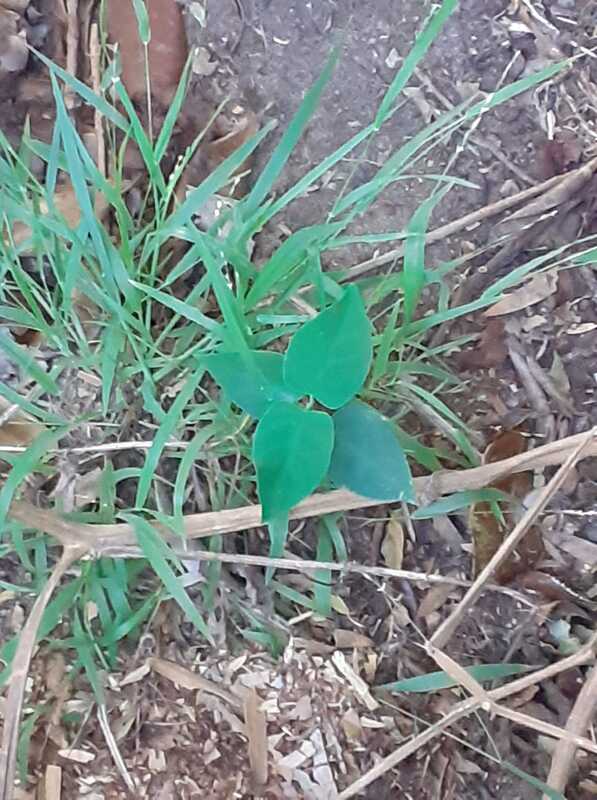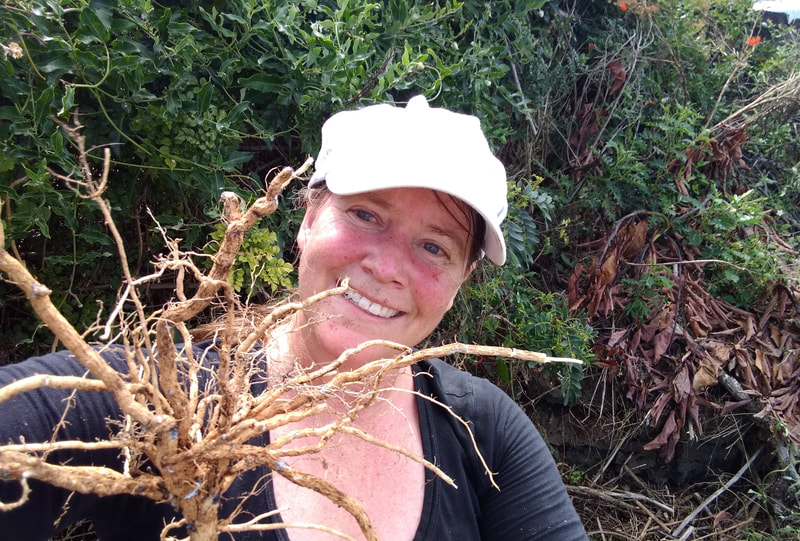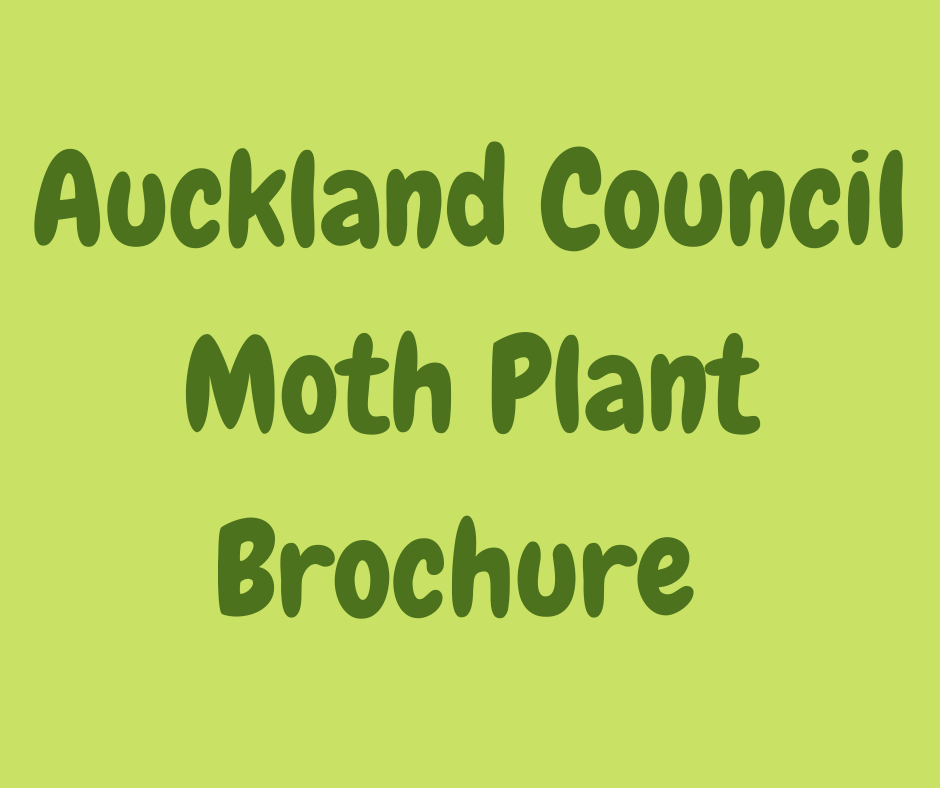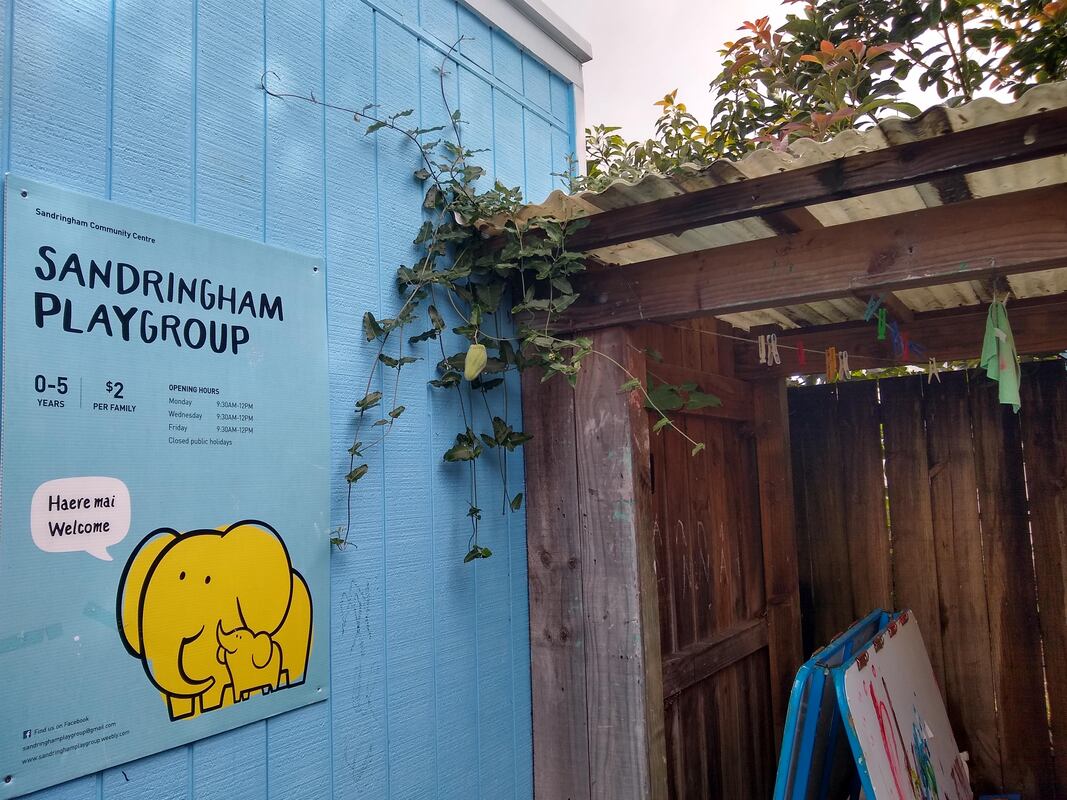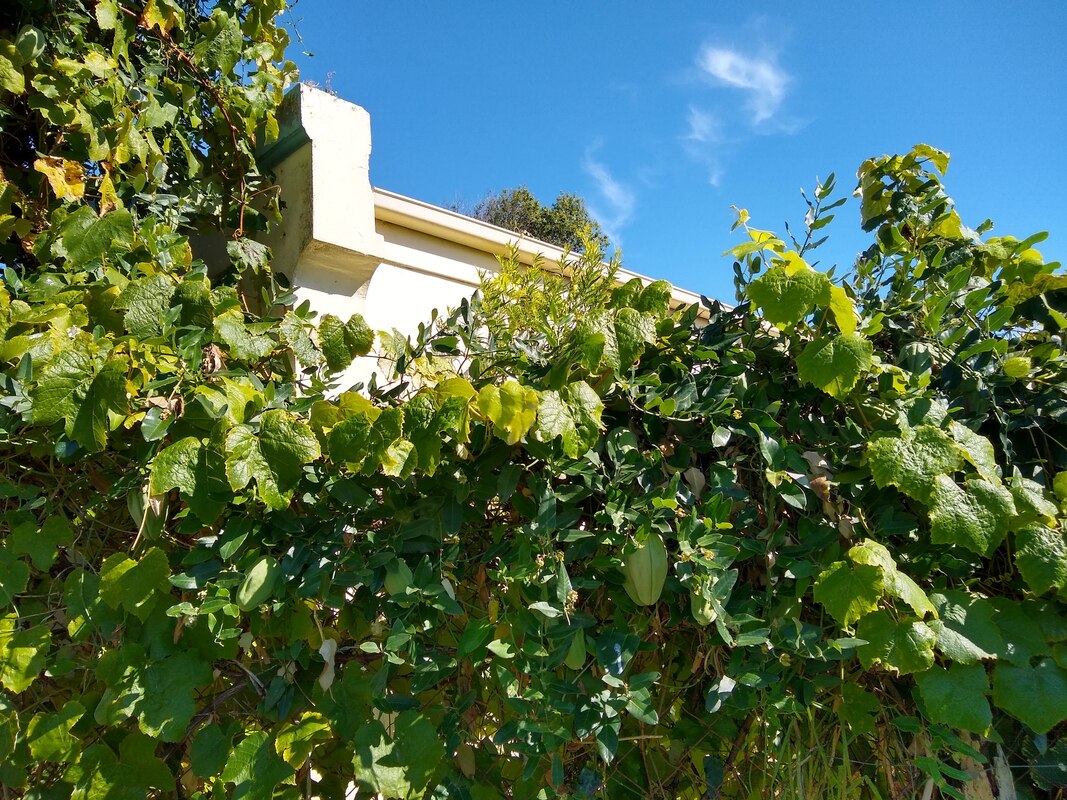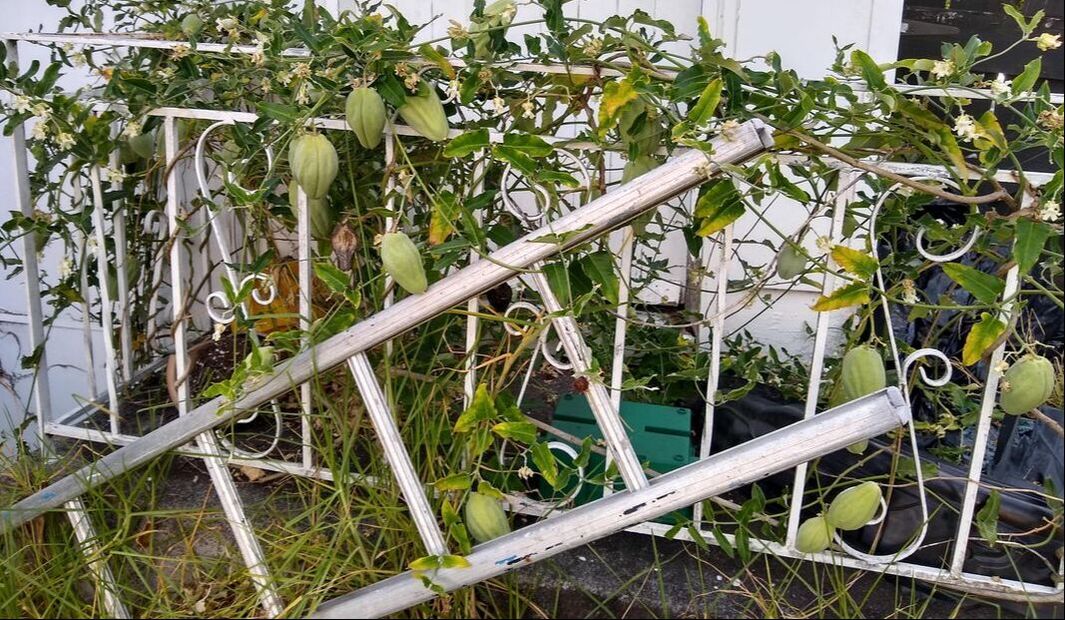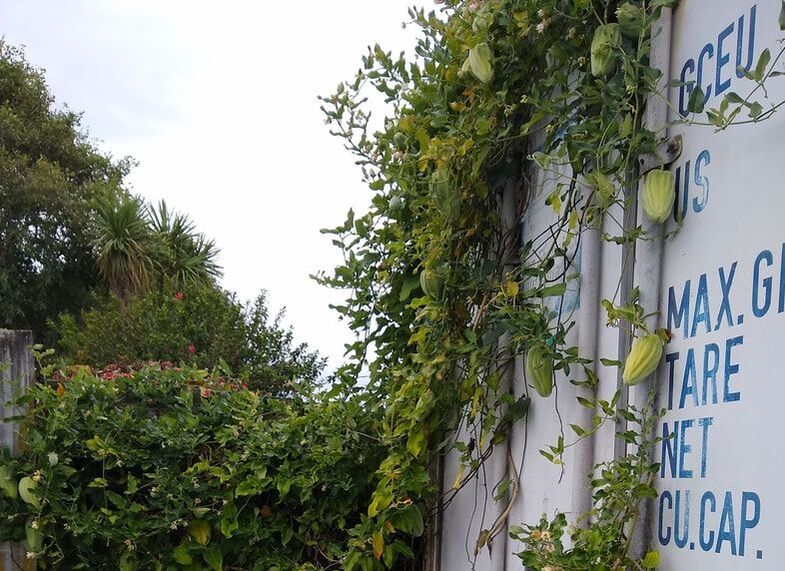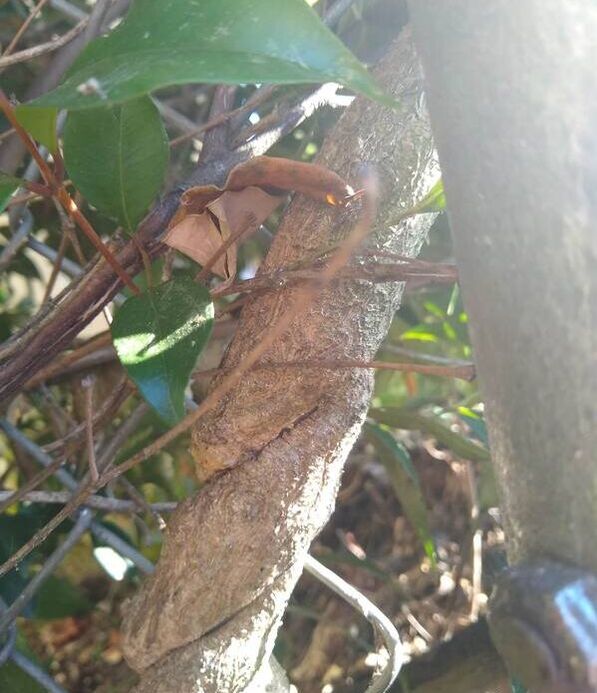Moth plant is a pest plant that is spreading through Sandringham, suffocating desirable plants and killing monarch butterflies. Here at SPiCE we are working with volunteers to eradicate moth plant from Sandringham by sharing information and resources. So on this page, we hope you will find everything you need to identify and remove moth plant from your home garden.
Together with the Mt Albert Grammar School Environment Group, SPiCE also ran a Moth Plant Competition in April 2022 to encourage people in our community to join in the battle to remove moth plant from Sandringham, which was a huge success. With the 17 teams and 72 active participants, we were able to remove an amazing 19, 561 moth plant pods and small vines with roots! We hope to run a Moth Plant Competition again in 2023. In the meantime, it is always a good time remove moth plant. So we encourage you all to grab some mates, get outside, find moth plants and take them down!
Resources
IDENTIFYING MOTH PLANT
In Auckland, moth plant can be found anywhere. From backyards and parks, to industrial and retail areas, and even in motorway plantings. There are a few different ways to identify moth plant - from pods to leaves, flowers to sap.
Moth Plant Pods: For much of the year you will be able to see the large moth plant pods. These grow from the white flowers on the vine, and contain hundreds of seeds which split and form new plants. Just be sure that you don't mix up moth plant pods with choko fruit. Chokos have shiny skin and are plump at the bottom. Moth plant pods have matt skin and are plump at the top where they attach to the vine. And choko vines have alternate hand-shaped leaves like maples.
White / pale pink flowers: The small and delicate white or pale pink star-shaped flowers on a moth plant vine often trick home owners into thinking they are a desirable plant. Growing from December to May, many of these flowers will become seed pods, spreading the devastating pest across nearby gardens and parks. Do not be fooled by the pretty flowers! Pulling out moth plants before seed pods form is the most time efficient way to eradicate them.
Sticky white sap: The white sap is the ultimate clue to a moth plant. If you are unsure a plant of seedling is a moth plant, snapping the vine open, or pulling of a leaf to see if there is white sap inside is a good way to test your theory. Just take care, the sap can be a skin irritant and is hard to remove from clothing.
Leaf Shape: Moth plants have arrow-shaped leaves with a wavy edge. These leaves sit directly opposite each other on the seedlings and vines. This is in contrast to many seedlings and vines which have leaves that alternate along the vine.
Once you have some practice, you will see them everywhere you go. Then you will officially have earnt your "moth plant glasses"!
In Auckland, moth plant can be found anywhere. From backyards and parks, to industrial and retail areas, and even in motorway plantings. There are a few different ways to identify moth plant - from pods to leaves, flowers to sap.
Moth Plant Pods: For much of the year you will be able to see the large moth plant pods. These grow from the white flowers on the vine, and contain hundreds of seeds which split and form new plants. Just be sure that you don't mix up moth plant pods with choko fruit. Chokos have shiny skin and are plump at the bottom. Moth plant pods have matt skin and are plump at the top where they attach to the vine. And choko vines have alternate hand-shaped leaves like maples.
White / pale pink flowers: The small and delicate white or pale pink star-shaped flowers on a moth plant vine often trick home owners into thinking they are a desirable plant. Growing from December to May, many of these flowers will become seed pods, spreading the devastating pest across nearby gardens and parks. Do not be fooled by the pretty flowers! Pulling out moth plants before seed pods form is the most time efficient way to eradicate them.
Sticky white sap: The white sap is the ultimate clue to a moth plant. If you are unsure a plant of seedling is a moth plant, snapping the vine open, or pulling of a leaf to see if there is white sap inside is a good way to test your theory. Just take care, the sap can be a skin irritant and is hard to remove from clothing.
Leaf Shape: Moth plants have arrow-shaped leaves with a wavy edge. These leaves sit directly opposite each other on the seedlings and vines. This is in contrast to many seedlings and vines which have leaves that alternate along the vine.
Once you have some practice, you will see them everywhere you go. Then you will officially have earnt your "moth plant glasses"!
REMOVING MOTH PLANT
There are a few things you need to consider when removing moth plant from a site. First, you must get permission from the landowner to be on their land removing moth plant. Second, you need to protect yourself from the sticky white sap which is a skin irritant by wearing gloves and protective clothing.
Then, you need to ensure that you:
1. Gather all the seed pods. Place in a plastic bag and dispose of in your landfill bin, or local weed bin. Higher up pods can be reached by extendable fruit pickers, boat hooks, rakes or your own home made tool.
2. Remove all the moth plant seedlings by gently pulling them out, ensure the roots stay intact. These can be left on site to rot - or if you are entering in our competition, taken home for a photo and put into your green bin or compost.
3. Pull out or poison all the large woody vines. The first step in this process is to trace the vine back down to where it comes out of the ground. If the soil is loose, you may be able to dig around it to remove even quite large roots. Tug it gently to see if it will easily give way. If it won't come out with the roots attached (which can sometimes happen even with small vines if they are growing out of a crack or crevice) you will need to poison the vine. Do this by making a horizontal cut as close to the ground with secateurs or a saw if it is a monster vine. By making the cut horizontal, it is easier to apply the weed killer gel and stop it dripping onto the soil or surrounding non-target plants. The vine can then be left to wither in situ.
Try and make sure you have traced all the vines down to the ground to ensure you are eradicating moth plant completely. If you can't get to the ground from which the vine is growing, just cut down as close as you can. Similarly, if you can't reach high-up pods, you can cut the vine as high up as possible. This will not kill the seed pods and large ones will still crack and spread seeds, but it will limit the energy that goes into them and stop them growing further.
There are a few things you need to consider when removing moth plant from a site. First, you must get permission from the landowner to be on their land removing moth plant. Second, you need to protect yourself from the sticky white sap which is a skin irritant by wearing gloves and protective clothing.
Then, you need to ensure that you:
1. Gather all the seed pods. Place in a plastic bag and dispose of in your landfill bin, or local weed bin. Higher up pods can be reached by extendable fruit pickers, boat hooks, rakes or your own home made tool.
2. Remove all the moth plant seedlings by gently pulling them out, ensure the roots stay intact. These can be left on site to rot - or if you are entering in our competition, taken home for a photo and put into your green bin or compost.
3. Pull out or poison all the large woody vines. The first step in this process is to trace the vine back down to where it comes out of the ground. If the soil is loose, you may be able to dig around it to remove even quite large roots. Tug it gently to see if it will easily give way. If it won't come out with the roots attached (which can sometimes happen even with small vines if they are growing out of a crack or crevice) you will need to poison the vine. Do this by making a horizontal cut as close to the ground with secateurs or a saw if it is a monster vine. By making the cut horizontal, it is easier to apply the weed killer gel and stop it dripping onto the soil or surrounding non-target plants. The vine can then be left to wither in situ.
Try and make sure you have traced all the vines down to the ground to ensure you are eradicating moth plant completely. If you can't get to the ground from which the vine is growing, just cut down as close as you can. Similarly, if you can't reach high-up pods, you can cut the vine as high up as possible. This will not kill the seed pods and large ones will still crack and spread seeds, but it will limit the energy that goes into them and stop them growing further.
When working in teams, it can be useful to have some people collecting pods, while others track and remove the vines. In fact, you will probably find you have a natural preference for one of these jobs! It is a good idea to re-visit sites a few weeks after you tackled them, as by then any vines that were missed will be obvious, and you can go in and quickly finish it off.
INFORMATION AND FLYERS
There is some great information online about moth plant. You can find some information on the Conservation Auckland website, and WeedBusters is also a great resource. If you have questions, or want to join a group who are passionate about removing moth plant from Auckland, than the S.T.A.M.P (Society Totally Against Moth Plant) Facebook Group is the place to be.
Moth Plant Map
One easy to track down moth plants in your local area is to check on this excellent map created and maintained by S.T.A.M.P. The map is colour coded with dots:
Approaching homeowners
When you approach homeowners, it can be very useful to have a copy of the Auckland Council Moth Plant Brochure with you. The brochure explains that moth plant has been identified as a pest plant in the Regional Pest Management Plan, how to recognise it and why it should be removed. You can download and print copies of this brochure (in both English or Chinese) by using the buttons below. We have also provided a letter box flyer that you can print. Write your details in it and leave it in letterboxes of houses you visit when no-one is at home, so homeowners can contact you if they would like you to come back and remove the moth plant for them.
INFORMATION AND FLYERS
There is some great information online about moth plant. You can find some information on the Conservation Auckland website, and WeedBusters is also a great resource. If you have questions, or want to join a group who are passionate about removing moth plant from Auckland, than the S.T.A.M.P (Society Totally Against Moth Plant) Facebook Group is the place to be.
Moth Plant Map
One easy to track down moth plants in your local area is to check on this excellent map created and maintained by S.T.A.M.P. The map is colour coded with dots:
- Purple - seen the previous year but unconfirmed if growing in the current year
- Yellow - killed this year, to be checked next year
- Green - was clear last year, but will need checking next year
- Red - seen this year, not yet removed
Approaching homeowners
When you approach homeowners, it can be very useful to have a copy of the Auckland Council Moth Plant Brochure with you. The brochure explains that moth plant has been identified as a pest plant in the Regional Pest Management Plan, how to recognise it and why it should be removed. You can download and print copies of this brochure (in both English or Chinese) by using the buttons below. We have also provided a letter box flyer that you can print. Write your details in it and leave it in letterboxes of houses you visit when no-one is at home, so homeowners can contact you if they would like you to come back and remove the moth plant for them.
|
As you can see from these photos, all taken in Sandringham, moth plant is a big issue for our suburb. But if we all learn how to deal with moth plant, and spend some time removing it from our gardens we can eradicate it.
We hope there is enough information on this page to educate you about moth plant, and encourage you to take some simple steps to remove it from your garden, and stop it spreading to your neighbour's garden as well. And if you need help or support with moth plant in Sandringham, please contact us as we may be able to help! |



